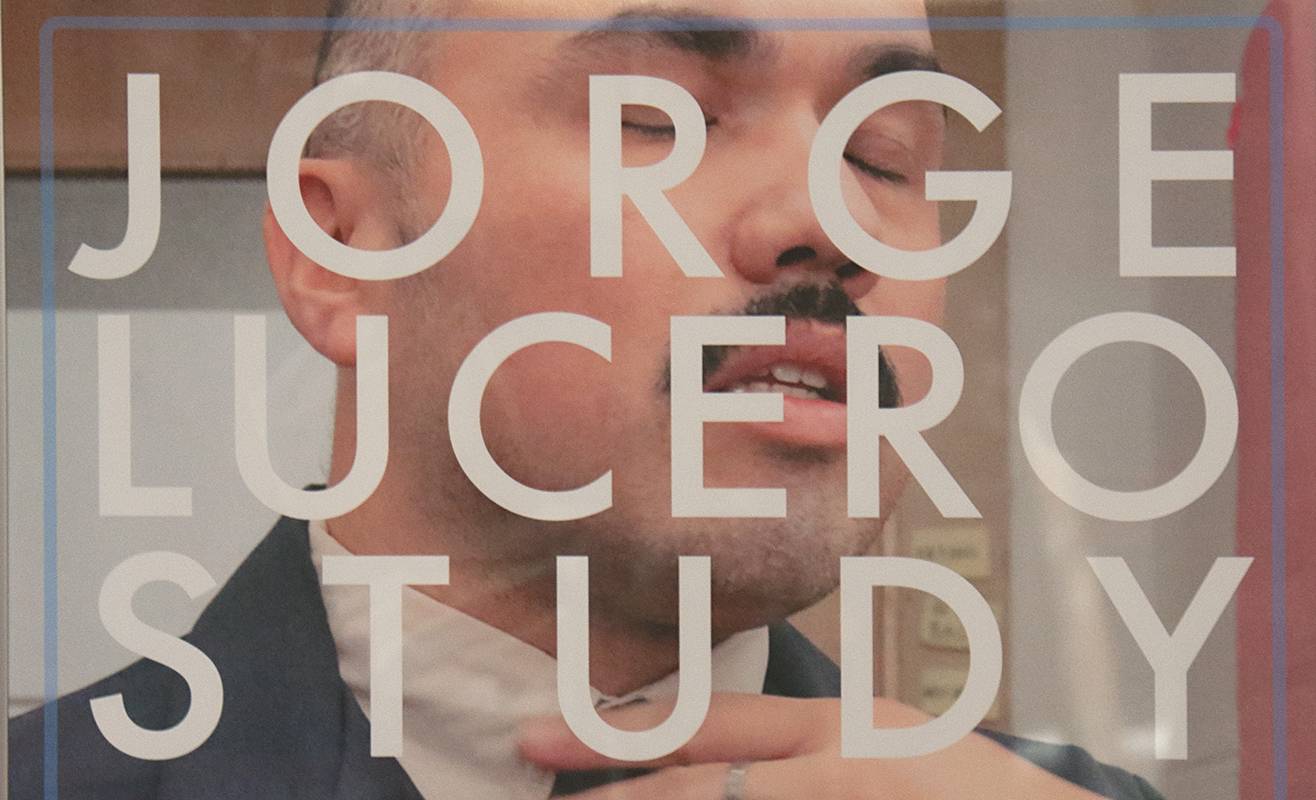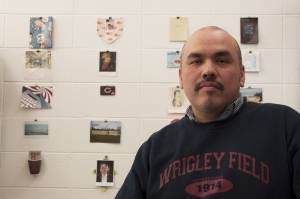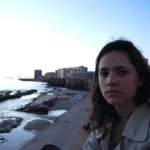Welcome back to WorkSpace, a series featuring an inside look at the places where local artists roll up their sleeves and take care of business. For each installment, I’ll bring an interview with a local C-U artist, complete with photographs of their work, to showcase his or her craft and expertise.
Jorge Lucero was formerly a Chicago Public School teacher. His artwork is not media-specific. Being an educator gives me permission to practice in whatever, and with whatever, medium is needed to realize a project.
He makes videos, collages, paintings and drawings, writing, performance art, events, photographs, and arrangements. On the other hand, much of his art is harder to understand as art. These works are more about duration, or how time passes. This art includes, but is not limited to, going to meetings, eating meals, sustaining relationships and taking care of others, being an activist, traveling, breathing, reading, and other forms of ephemeral. They’re difficult to solidify.
-
Art form: Not media-specific
.

- Influences: The Internet, Wes Anderson, The writings of John Cage, Luis Camnitzer, Erwin Wurm, Jim Duignan, Thomas Hirschhorn, Igmar Bergman, Duchamp’s interviews, Gabriel Orozco, Stephanie Springgay.
- WorkSpace: An office.
- Recommended movie: The Seventh Seal, Mr. Smith Goes to Washington, The Empire Strikes Back, The Fantastic Mr. Fox, Super 8, Quiz Show and Barton Fink. When Marnie was there, Steve Jobs, Red Tails, The Signal, and White God.
- Favorite spot in C-U: Ambar, Masijta Grill, Mashawi Grill, Golden Harbor, El Progreso, Rick’s Bakery, Crane Alley, Prairie Fruits Farm, Pandamonium donuts, apple donuts at Curtis Orchard.
- Thoughts on art scene in C-U: “I like how diverse it can be and how inclusive it wants to be.”
- Where to see his work: At the Chicago Cultural Center called Present Standard and most of his work can be engaged online www.jorgelucero.com
Smile Politely: When and how did you decide to become an artist?
Jorge Lucero: As far as I can remember I wanted to be an artist. Ever since I was a little boy I used to love solving puzzles. I had a large collection of jigsaw puzzles. I also liked to impress people with things I made. I would put on puppet shows for the neighborhood kids with garbage I scavenged from one of those large blue dumpsters located behind the apartment we used to live in. At the same time I used to trace pages from coloring books and tell people that I made those drawings freehand. All the adults I showed my copies to acted like I had done something incredible. Later, when I was in first grade, the teacher gave me special drawing assignments to keep me from disrupting the class with my comedy. In fourth grade Mrs. Schroeder entered one of my drawings into a contest at the local zoo. It was a drawing of an elephant wearing a Santa hat. On a slushy December night my dad took me to go see the drawing installed at the zoo. We were told by a member of the staff that he didn’t know anything about a kid’s drawing show. Disappointed, we turned around and drove back home and I never saw that drawing again. I went to high school with an incredibly strong cohort of “art kids”. My best friend since high school is also an artist and many from that cohort remain involved in the arts. Importantly, we had three supportive art teachers that consistently disagreed with each other about our art. After high school I went to art school and that’s where I learned that art was philosophical. All of these things were essential in my development as an artist.
SP: What or who are your influences?
Lucero: These are some of my influences, in no particular order: The Internet, Alberto Aguilar, The writings of John Cage, Luis Camnitzer, Chicago sports, Thomas Hirschhorn, my wife and kids, spicy food, Nicole Eisenman, my students, Igmar Bergman, comedians, Mexico’s vistas, curriculum theory, Duchamp’s interviews, puns, Gabriel Orozco, Stephanie Springgay, Charles Garoian, Laura Owens, Morrissey, Natalia Lafourcade, Matthew Goulish, the Bible, The Catcher in the Rye, schools and other bureaucracies, Crowded House, Wes Anderson, the physicality and graphic design of books, Erwin Wurm, Jim Duignan, Chicago Imagism, museo de art util, memories of my parents, action figures, and Marcel Broodthaers.
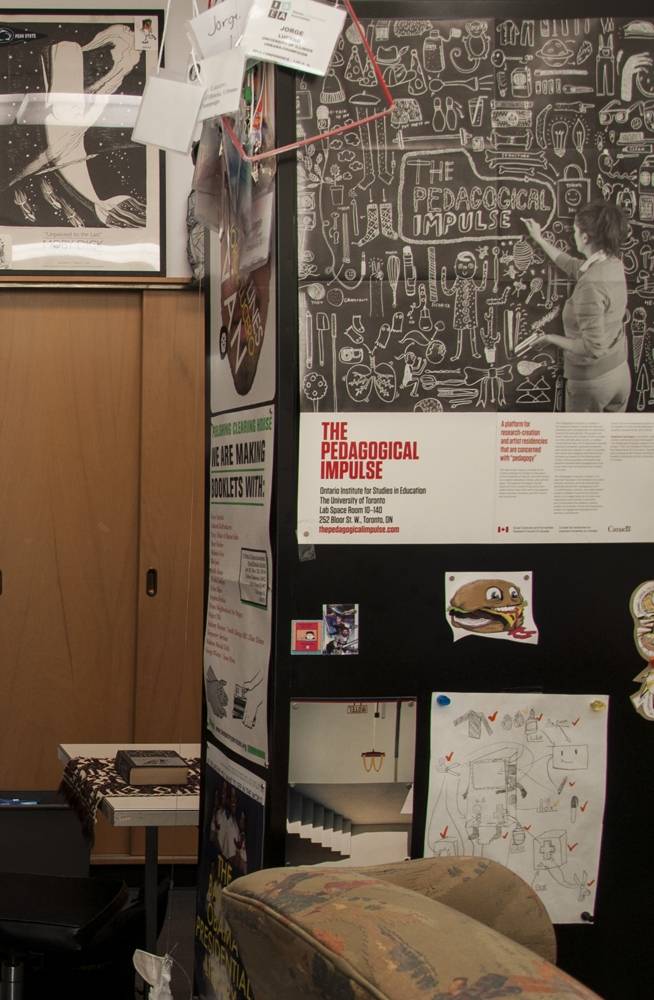
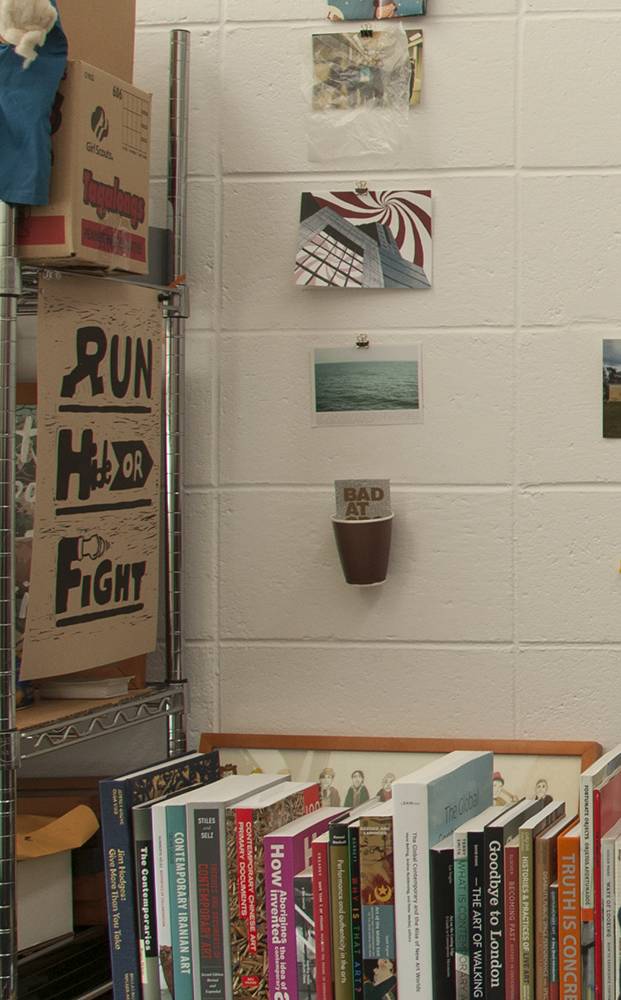
SP: Who would you like to collaborate with and why?
Lucero: I’m very fortunate to have collaborated with every person I’ve ever wanted to make something with.
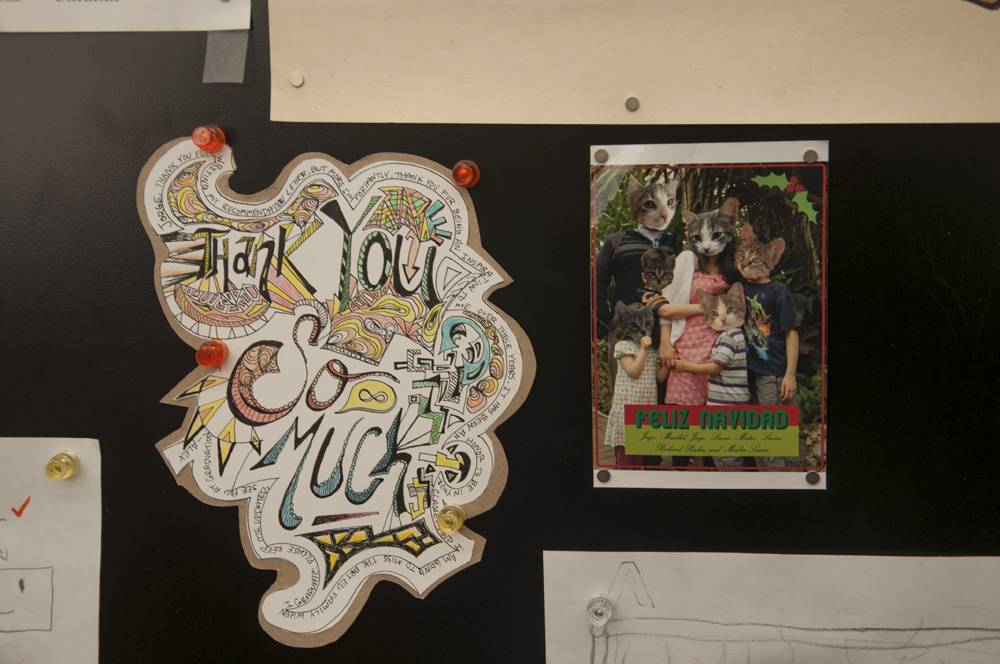
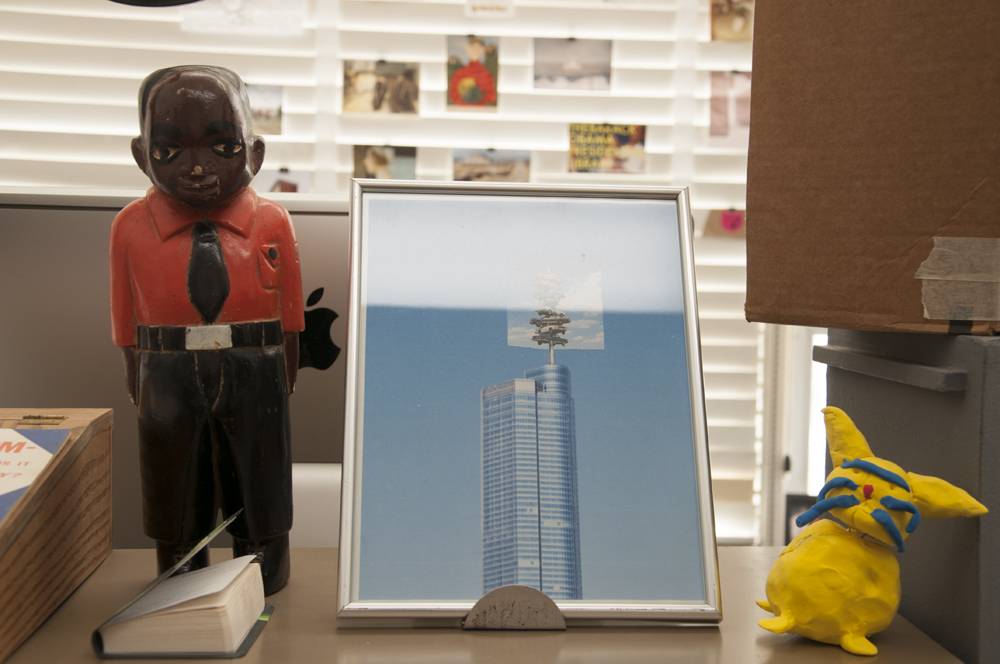
SP: Tell us about your workspace.
Lucero: I work in an office. Since I’m not a media specific artist, I adjust my work spaces to fit the needs of what I’m making. Space can always be found to make big things, but I like the fact that my office sets a parameter for how I should make my work on a day to day basis. The limitations are not just found in my space, but also in the way that my time is constrained. My job, my family, my civic responsibilities all define the parameters of the “sites” where I work. Most of what I make happens on the computer, at the site of exhibition, at a small table, with a camera or scanner, while watching TV, while I’m driving, or in conversation. I try to outsource the manufacturing of some of my objects as much as possible, but occasionally I’ll make a physical object with my own hands.
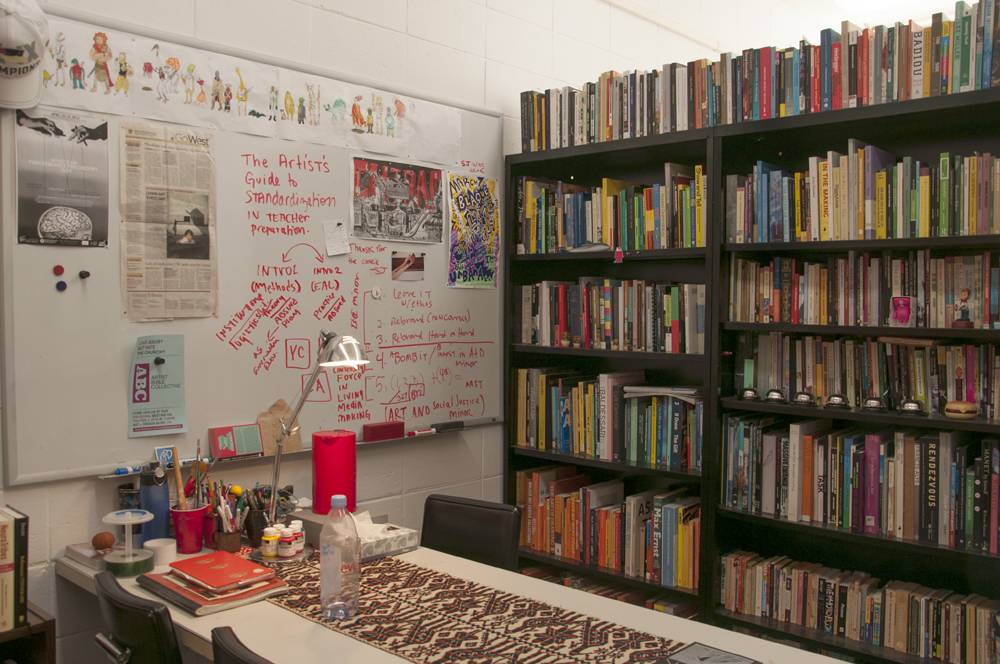
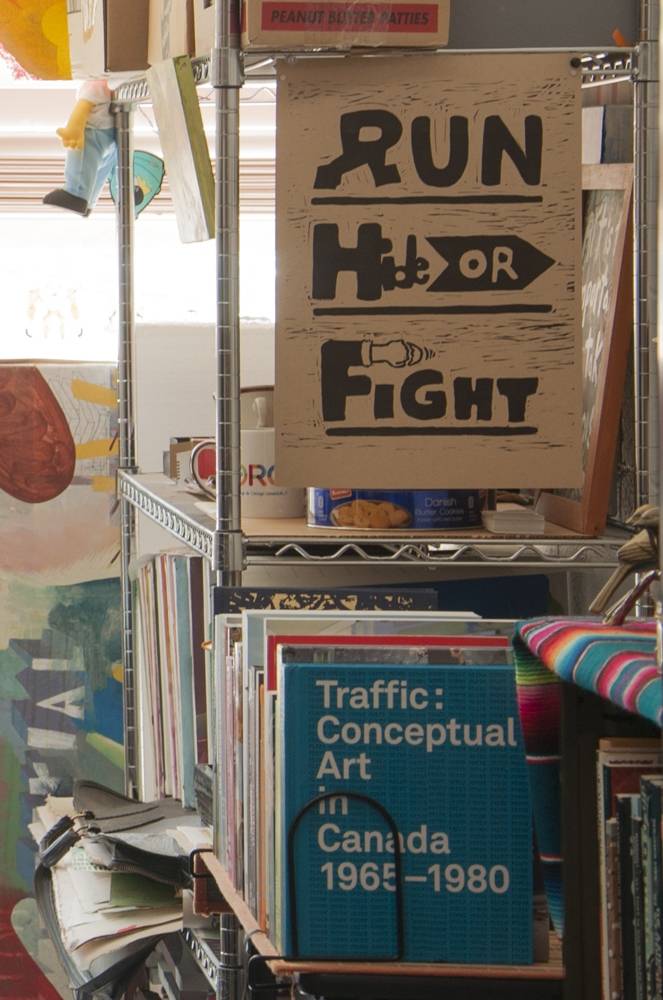
SP: Choose a piece of your art work and explain it in detail.
Lucero: I have been slowly working on making my teaching practice my artistic practice. This project started in 1999 and continues to this day. What it involves is a heightened understanding of the “school” as a type of artistic material. Yes, there are parts of schooling that can be aestheticized, such as a classroom syllabus, field trips, a lecture, a handshake, or a website; but there are many aspects of this project that don’t depend on aesthetics or the artistic look of things. The art characteristics of this project have more to do with, what I call “modes-of-operation” or more simply put: “how” something is done or enacted. Teaching as conceptual art practice is something that happens in the mind first and then, if necessary, through the body. Teaching as conceptual art practice is frequently best when the fact that “art” is happening is blurred and sometimes ignored. Admittedly, this project is unspectacular. This project has involved hundreds of collaborators and is poorly recorded through images, videos, and a patchy collective memory. It’s very likely that the most solid documentation of this work won’t exist until after I’m dead.

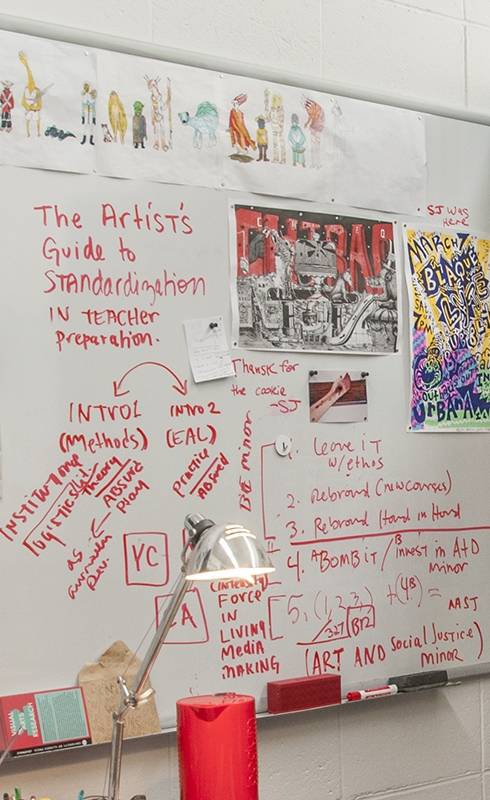
SP: What movie would you recommend to watch and why?
Lucero: This is the hardest question to answer, but I think I can answer it in two ways. I will tell you my top seven movies and then I will tell you five recent movies that I saw and I why I enjoyed them. My top seven favorite movies are listed here with my reasons in parentheses: The Seventh Seal (spiritual impact), Mr. Smith Goes to Washington (Frank Capra and Jimmy Stewart, yo!), The Empire Strikes Back (nostalgia), The Fantastic Mr. Fox (repeated watchability), Super 8 (kids as contemporary practitioners), Quiz Show (moral dilemma and young Ralph Fiennes) and Barton Fink (art and funny together again). The five recent films I’ve seen that I recommend are: When Marnie Was There (the Ghibli animation is, more than ever, resonating), Steve Jobs (script and acting), Red Tails (a Lucasfilm gem about the Tuskegee Airmen with great aerial dogfights), The Signal (lo budget sci-fi thrller with cheesy, but fun twists), and White God (dogs going berserk on abusive humans).
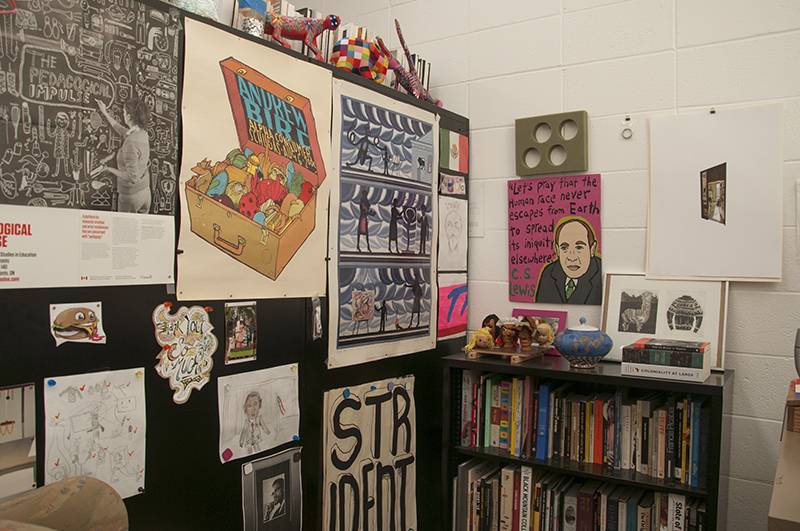
SP: What is your favorite spot in C-U?
Lucero: I like my home. The Mexican food is always delicious. The temperature is always just right. The cats are comforting. The TV is big enough. And the people are some of the best human beings I know. When we go out, we like to eat at Ambar (Indian), Masijta Grill (Korean), Mashawi Grill (Middle Eastern), and–of course–Golden Harbor (Chinese). El Progresso, over on University and Philo makes the best carnitas on the weekend. They’ll sell you the homemade salsas and tortillas too, for instant tacos that are as good as anything you can get in Chicago. They’re cheap too! We also really like Rick’s Bakery over on Philo for their tamales and spinach and feta croissants. We like the crab cakes at Crane Alley and the gelato at Prairie Fruits Farm. We enjoy Pandamonium donuts and the Apple donuts from Curtis Orchard. Being from Chicago, we’re not hesitant to drive an hour for food or good times. We frequently drive to Normal to eat at the Garlic Press or Carl’s Ice Cream and we also travel to Danville for $3 matinees and Vintage Villains (a toy store and arcade).
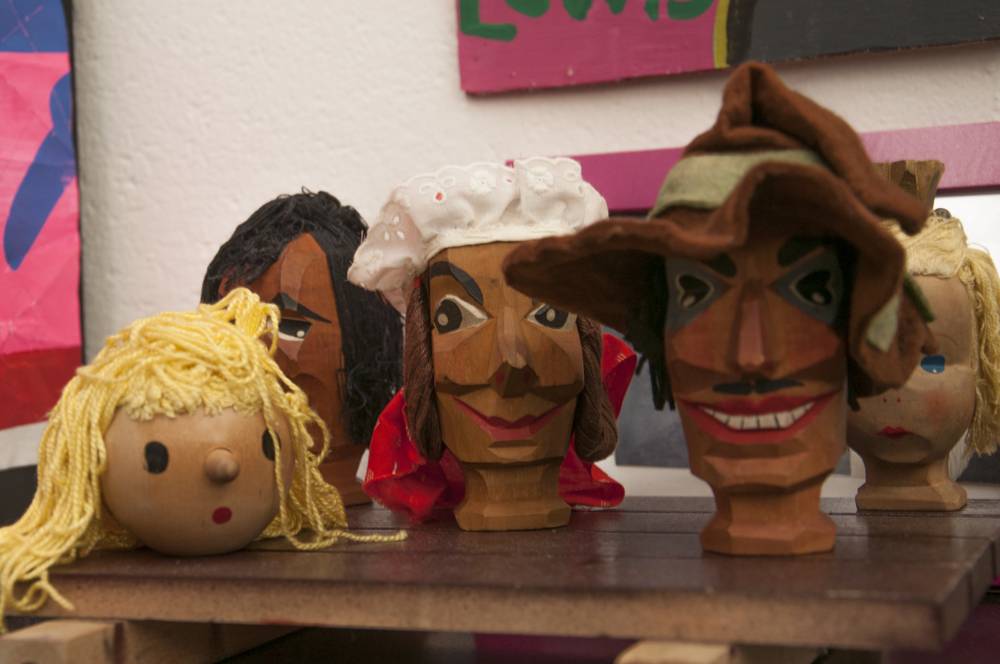
SP: What do you think about the art scene in C-U?
Lucero: I like how diverse it can be and how inclusive it wants to be. The scene in Chicago is similar, you just have to know who you want to associate with. I suppose there is elitism in any specific sampling of cultural producers, but I manage to keep myself open to folks and more often than not they open themselves to me. There are several master Alebrije makers who immigrated to CU from Oaxaca. They are some of my favorite artists in town. I like people who want to take care of each other and I have found that there are a lot of people in Champaign-Urbana who want this. Many of them are not art makers, but they are important contributors to the cultural landscape of this region. I like how many activists, teachers, and thinkers live in town. To me, they’re part of the “scene” in town.
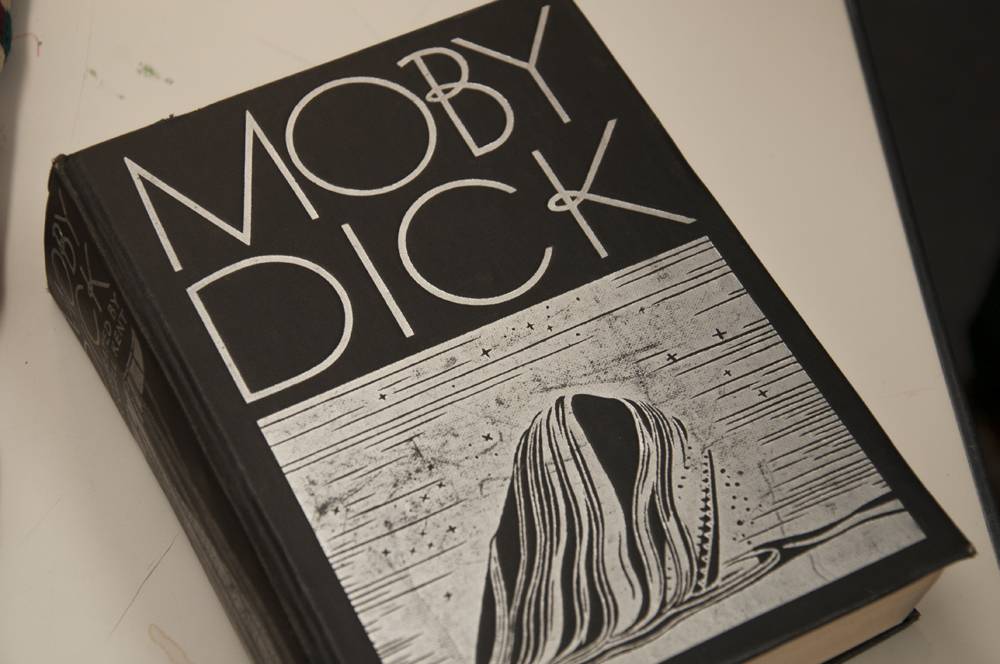
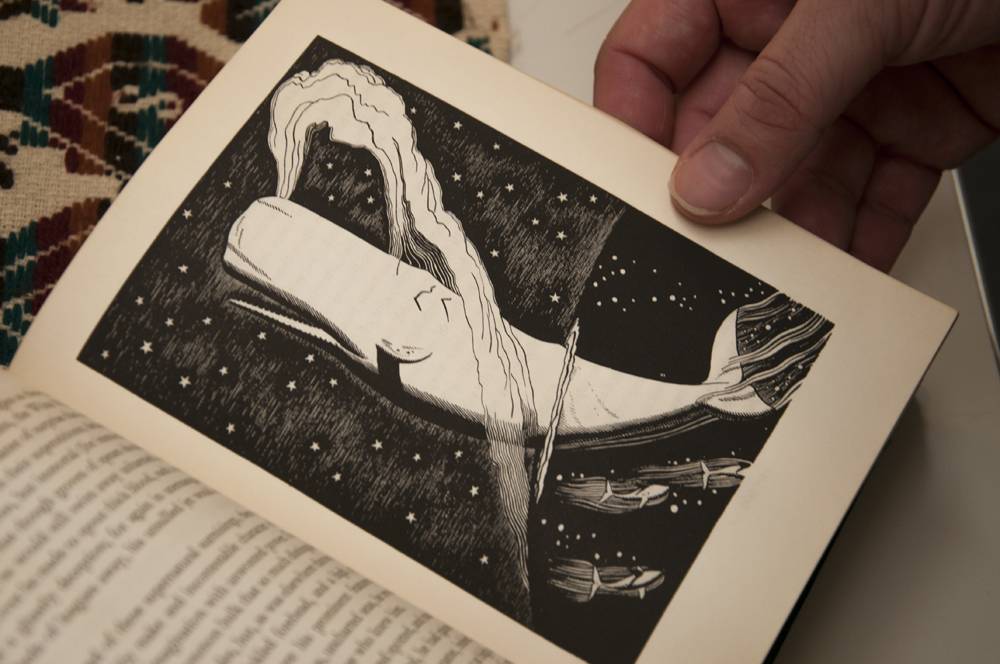
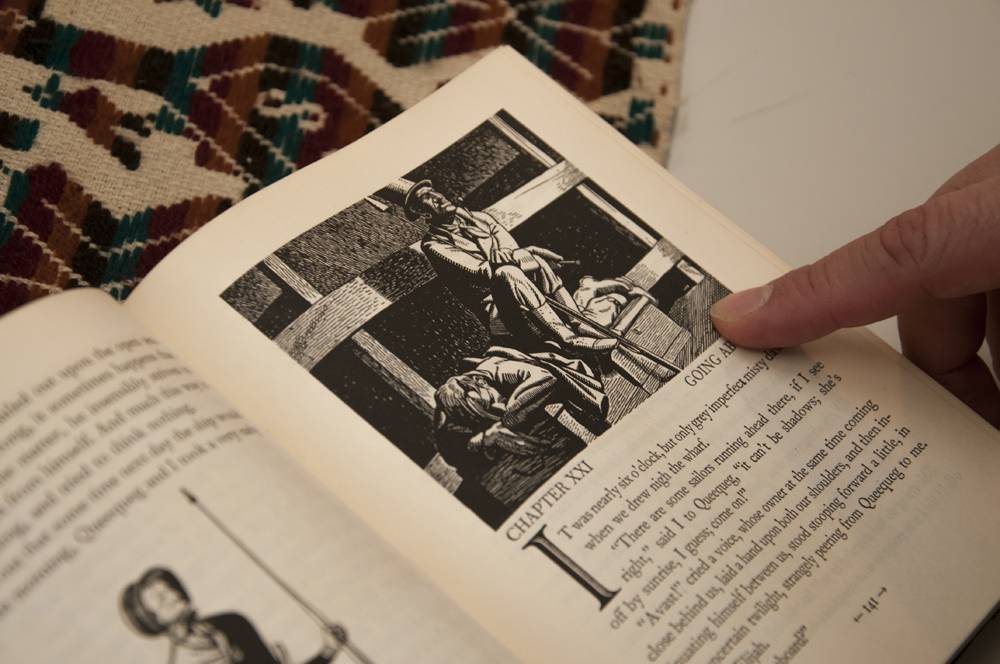
SP: Of all objects that you have in your WorkSpace, what is your favorite, and why?
Lucero: This is a first edition of the Random House version of Moby Dick. I have another copy of the book that I use for reading. This copy is strictly for the illustrations. The images are bookplates by the upstate New York painter Rockwell Kent. Kent is an artist I’ve always liked even though I don’t make work influenced by him. I have a fascination with graphic hard lines and bold representational images that rarely makes it into my own artwork. I love looking at this type of work, but I’m not interested in making or teaching from this type of work. There are some “things” in this world that I love so much I refuse to make work about them. They’re like religious artifacts to me. I feel the same way about the television show Adventure Time. The eleven minutes of each episode is so engrossing to me that I would like to hold on to it as an unarticulated sensation. I like it just as an experience. I fear that if I make work about or through it, I may lose that sensation.
In some ways my taste in this type of work set me on the life path that I have taken. This copy of Moby Dick reminds me of a particular moment in my life. Prior to becoming a teacher I applied to do a Master’s degree in painting. During the admission interview a professor from the school I was applying to asked me what some of my influences were. I mentioned that I really liked Grant Wood, another regionalist painter similar to Rockwell Kent. The professor looked at my work —which admittedly displayed no regionalist painting influence— and I was consequently not admitted into that program.
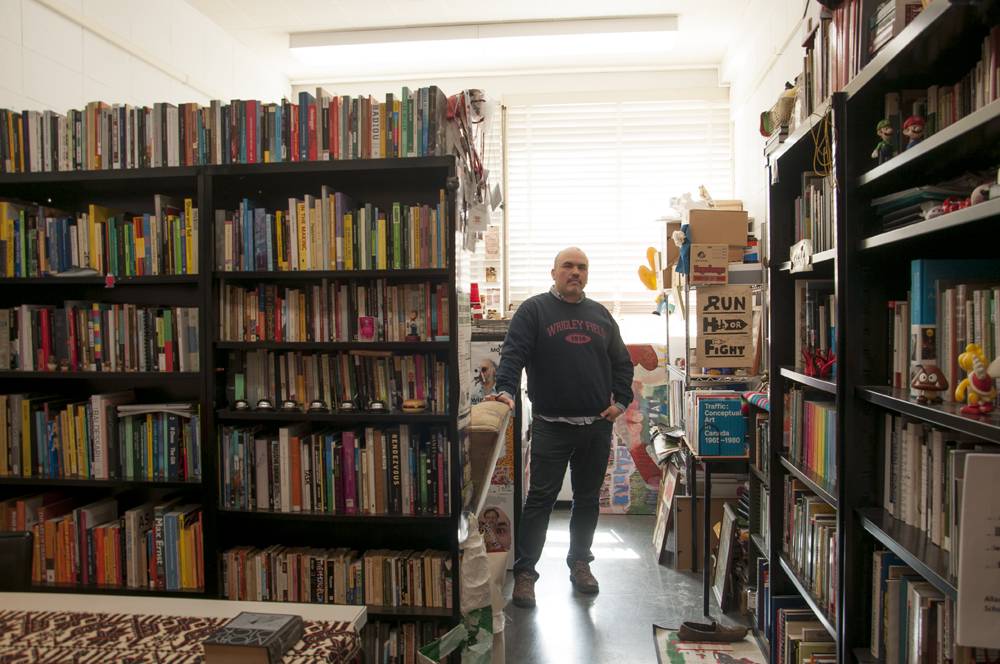
SP: In your personal opinion, which is the biggest challenge in arts education right now?
Lucero: The wording of your questing is interesting because it denotes that there is something to overcome and it also points to the incessant interest in education to always be making progress. Although I’m not blind to the urgent needs for access and fairness in education, I’m not as interested in verticality as much as I’m interested in horizontality. Horizontality is riskier and in my sense more like art. I’m less interested in overcoming challenges than I am in recognizing, understanding, bracketing, and making pairs of difference. I think that practitioners of art education, and maybe education in general, have the great privilege of existing in and as “fields”, horizontal fields of incalculable and potentially crushing difference. I like the poetry, the interweaving, and the ebb and flow of that “crush”. I think that I best contribute to the field(s) of art education by making those fields identifiable and sometimes even habitable for myself and others, even if its only for a little while.
SP: Where, when and how can we see your work?
Lucero: Sometimes I show objects in conventional art shows. Currently I’m in a group show at the Chicago Cultural Center called Present Standard. Most of my work can be engaged online. I also write and make texts and some of that work has been published. On my website you can look at images, read text, watch videos, and send me an email.
About Jimena:
Jimena is a photographer at Smile Politely. Find more of her work and photographs online:








